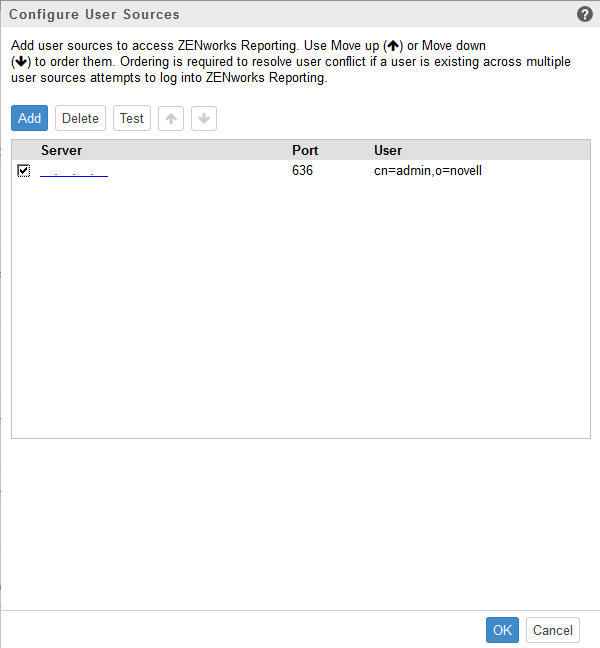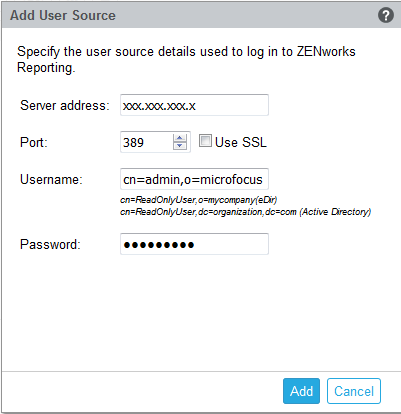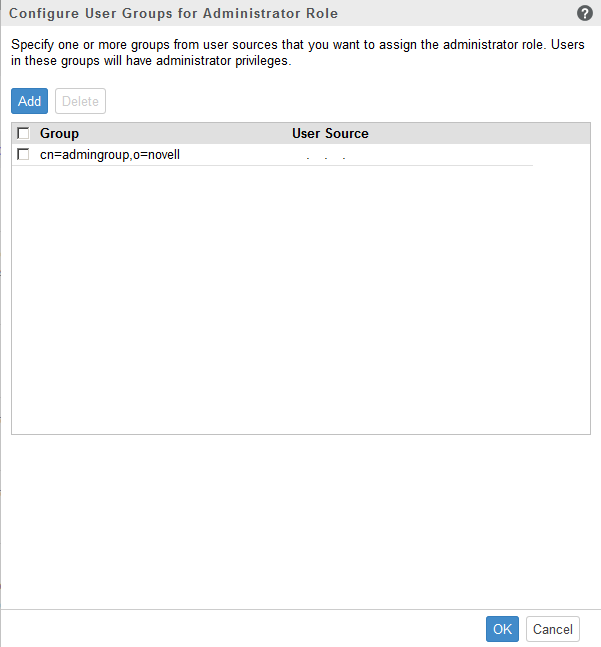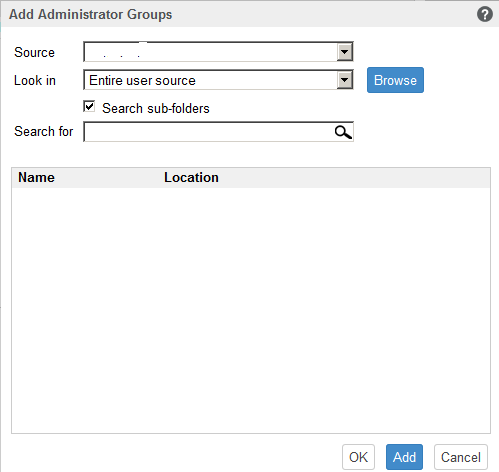4.2 Reconfiguring ZENworks Reporting Appliance
After configuring ZENworks Reporting, you can reconfigure the settings.
To reconfigure the ZENworks Reporting settings.
-
On the ZENworks Reporting Appliance home page, click ZENworks Reporting Configuration.
-
In the Summary tab, configure the following required settings, and then click Apply:
The asterisk (*) indicates that one or more configurations are modified. Changes should be applied to take effect.
For more information about the ZENworks Reporting Configuration page, see ZENworks Reporting Configuration.
4.2.1 Certificate Configuration
-
Click Remint to remint the Internal certificate, if the configured Certificate Authority (CA) is Internal.
-
Click Change CA to change the configured CA. Based on the External CA type, specify the details.
For information on certificates, see Step 12 in ZENworks Reporting Configuration.
-
Click View Certificate to see the certificate details.
4.2.2 Domain Configuration
The domain is packaged in the resource file. So, when a new resource file (updated domain) is released as part of a ZENworks or ZENworks Reporting release, you will need to reconfigure domains with this resource file to get the new updates.
This page enables you to add or edit domains. To edit a configured domain, click on the name. You can choose the latest version or the earlier version of the domain or change the datasource details for that domain.
NOTE:
-
If you reconfigure a domain with the new ZENworks resource file, the existing custom reports, custom datasource, and custom domain will not be changed. Only predefined reports will be updated.
-
Before reconfiguring ZENworks Reporting, back up the ZENworks Reporting resources (reports, views and so on) as follows:
-
Log in to the ZENworks Reporting server console (https://<ip>:443) as an administrator.
-
Go to Manage > Server Settings > Export.
-
Save the export.zip file to your local machine.
-
For reconfiguring domains, see Step 10in Configuring ZENworks Reporting Appliance.
4.2.3 User Source Configuration
Click User Source Configuration.
To add or edit multiple user sources.

-
Click Add to add a user source, specify the following details:

-
Server Address: Specify the Fully Qualified Domain Name (FQDN) or IP address of the User Source, which is used for user authentication.
-
Port: The default port value is displayed based on the selected SSL. The default SSL port is 636 and the default non-SSL port is 389. If the user source is configured with a different port, other than the above mentioned default ports, then the port must be updated accordingly.
-
Username: ZENworks Reporting server needs read-only access to the LDAP directory to authenticate every login attempt. The credentials of this user is used to get read-only access.
Specify the username in distinguished name (DN) format. For example:
-
Novell eDirectory: cn=ReadOnlyUser,o=mycompany
-
Microsoft Active Directory: cn=ReadOnlyUser,cn=users,dc=organization,dc=com
After configuration, if the credentials of this user is modified, ZENworks Reporting server will not be able to access the LDAP directory to authenticate login attempts. You must reconfigure ZENworks Reporting with the new credentials.
Active Directory allows you to create an organization unit (OU) and username with some special characters that are not accepted by the ZENworks Reporting Appliance (the appliance does not proceed further with the unsupported special characters). In this scenario, each of these special characters ; = , + < >" must be appended with a backslash “\”. For example, specify ReadOnly,User as ReadOnly\,User
-
-
Password: Specify the password of the first authentication user.
-
Click OK to check whether the connection to the user source is established.
If you have enabled the Use SSL check box, then a certificate popup is displayed. Verify the details, and then click Accept.
-
Click OK to continue.
-
-
Delete: Select the user source that you want to remove and click Delete. If a user source is deleted, the users from that user sources cannot have access to ZENworks Reporting.
-
Move up: Select the user source that you want to step up in the list. This ensures that the user authentication for this user source is attempted with higher priority than those listed below.
-
Move down: Select the user source that you want to step down in the list. This ensures that the user authentication for this user source is attempted with lower priority than those listed above.
-
Test: Select the user source that you want to test, and then click Test to check whether the connection to the user source is established.
4.2.4 User Group Configuration
To add user groups from the configured user sources so as to get ZENworks Reporting administrator rights for the members of the those groups.

-
Click Add and specify the following to add a LDAP group:

-
Source: Select a configured user source.
-
Look in: You can search the entire user source or click Browse to select a specific search container from the user source. Select the Search sub-folders check box to search the container recursively.
-
Search for: Specify the name or a few characters that contain the name of the group you want to search and click the search icon. The names of the groups in the search container that contain the search text is displayed. You can select one or more groups from the search results, then click Ok to add user groups. Else, click Add if you want to configure them and continue.
-
-
Select one or more groups from the list and click Delete to revoke administrator privileges from the users belonging to these administrator groups.
-
Select the Group check box to select all the groups from the list and delete.
IMPORTANT:
-
Only administrators have access permissions to ZENworks Reporting. The administrator privileges are:
-
View, run, schedule, create, save, and delete various ZENworks Reporting resources (For example: reports, views, domain, and data sources)
-
Assign access permissions (read, write, delete, execute, and administer) for various ZENworks Reporting resources to other users either at a role level or at a user level.
-
Manage ZENworks Reporting server settings
-
Delete users or roles
-
-
If you have selected a parent group (a group containing other sub-groups), note the following:
-
For Active Directory: Users in those sub-groups will not have administrator privileges. To assign these users administrator privileges, configure them individually.
-
For eDirectory: All the sub-groups will also have administrator privileges.
-
4.2.5 Email Server Configuration
Click Email Server Configuration.Configure the outbound email server settings to send email notifications and reports.
To configure the outbound email server, specify the following:
-
Outbound email server: Specify the FQDN or IP address of the SMTP server. The SMTP server is used for mailing scheduled reports.
-
Port: Specify the port number on which the SMTP server is listening. The default port number is 25.
-
Use SSL/TLS: Select this option if the SMTP server is running on SSL or TLS.
-
Sender email address: Specify the sender email address from which all scheduled reports will be sent.
-
Requires Password: Clear the check box to configure the Outbound email server without authentication. Select the check box if you want the sender to use a password for authentication.
-
Password: Specify the sender's password.
-
Click Ok.
4.2.6 Administrator
Change the password for ZENworks Reporting administrator.